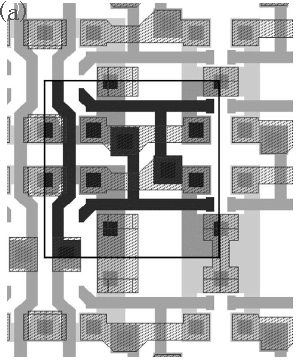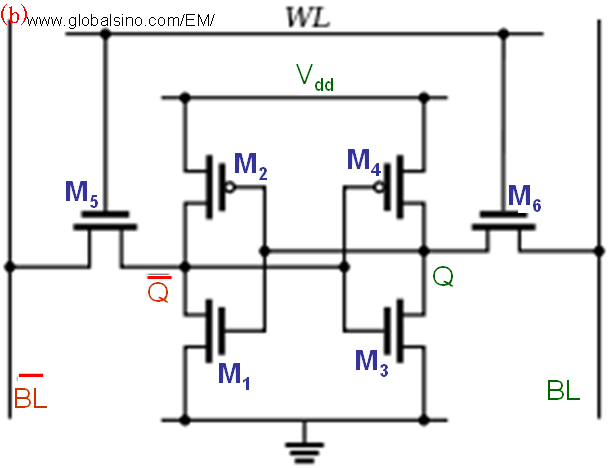Static Random Access Memory (SRAM) - Practical Electron Microscopy and Database - - An Online Book - |
||||||||
| Microanalysis | EM Book http://www.globalsino.com/EM/ | ||||||||
| ================================================================================= | ||||||||
Static random-access memory (SRAM or static RAM) is a type of semiconductor memory that uses bistable latching circuitry to store information. A typical DRAM bit cell contains of 4–8 transistors. In SRAMs, a single word-line is divided into several ones by the sub-wordline drivers (SWL). Every SWL has to be selected by the main word-line (MWL) and the row select line signal (RX). Thus, only a partial word-line will be activated. Figure 3295 shows a six-transistor CMOS SRAM bit cell. Each bit in an SRAM is stored on the four transistors (M1, M2, M3, and M4) that form two cross-coupled inverters. This storage cell has two stable states (0 and 1). Two additional access transistors (M5 and M6) control the access to the storage cell during read and write operations.
Figure 3295. A six-transistor CMOS SRAM bit cell: (a) Layout [1]; (b) Schematic illustration.
[1] Alex A. Volinsky, Larry Rice, Wentao Qin, and N. David Theodore, FIB failure analysis of memory arrays, Microelectronic Engineering 75 (2004) 3–11.
|
||||||||
| ================================================================================= | ||||||||
|
|
||||||||

